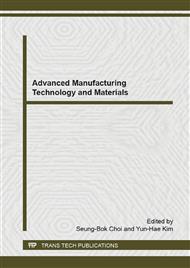p.341
p.346
p.350
p.354
p.359
p.365
p.369
p.373
p.377
Study of Laser Peening on TiAl Alloy Properties with Different Parameters
Abstract:
Laser peening is a novel surface treatment process that generates deep compressive residual stresses and microstructural changes and thereby dramatically improves fatigue strength of critical metal aircraft engine parts. In order to study the effects of laser peening on properties of TiAl alloy, Surface micro-hardness, microstructural, residual stress and pole figures before and after laser peening were tested. The experimental results showed that surface micro-hardness increased by 23%. The compressive residual stress increased 20 times. The texture in the normal direction of 8J peened sample showed a strong fiber texture components 10o away. In conclusion, the laser peening could improve properties of TiAl alloy.
Info:
Periodical:
Pages:
359-364
Citation:
Online since:
January 2015
Authors:
Keywords:
Price:
Сopyright:
© 2015 Trans Tech Publications Ltd. All Rights Reserved
Share:
Citation:


